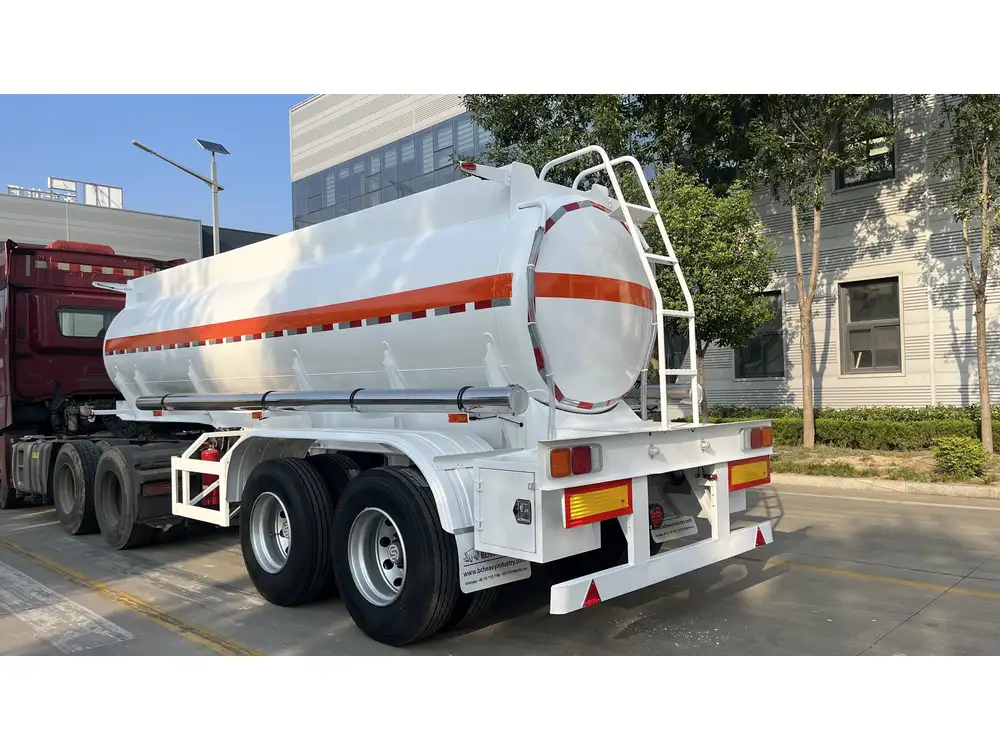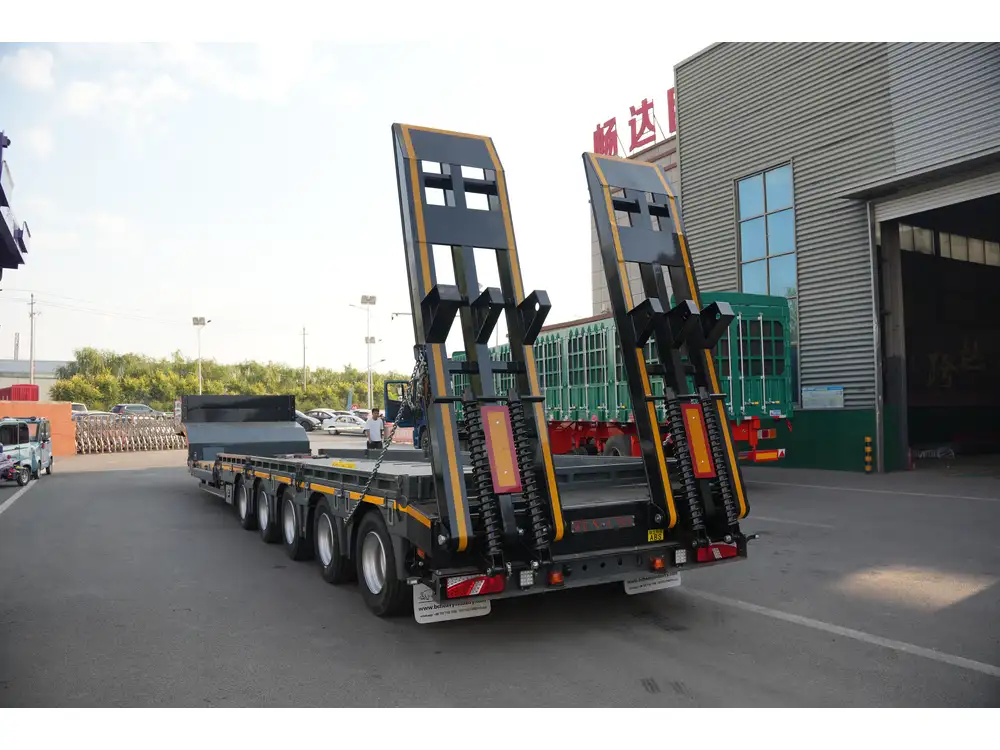The transportation of fluids is a critical aspect of numerous industries, and tractor trailer tankers play a definitive role in this mechanism. Understanding the capacity of these vehicles can significantly influence logistics, operational costs, and decision-making processes. This article delves deeply into the various factors that determine how many gallons a tractor trailer tanker can hold, providing a comprehensive overview that satisfies both curiosity and operational necessities.
Types of Tanker Trailers and Their Capacities
1. Standard Fuel Tankers
Fuel tankers are designed primarily for transporting liquid fuels, such as gasoline, diesel, and other petroleum products. Their capacity can vary widely based on design and regulatory standards but typically ranges from:
| Type of Tanker | Gallons (approx.) | Liters |
|---|---|---|
| Standard Fuel Tanker | 5,000 – 10,000 | 18,925 – 37,854 |
| Super Fuel Tanker | 10,000 – 11,600 | 37,854 – 43,948 |

2. Chemical Tankers
Chemical tankers are specially designed to transport various industrial chemicals. The capacity for these tankers is precisely engineered to ensure safety and compliance with environmental regulations. Common capacities include:
| Type of Tanker | Gallons (approx.) | Liters |
|---|---|---|
| Small Chemical Tanker | 4,000 – 6,000 | 15,141 – 22,700 |
| Large Chemical Tanker | 6,000 – 10,000 | 22,700 – 37,854 |
3. Food-grade Tankers
These specialized tankers are used for transporting edible liquids like milk and juice. They must adhere to stringent hygiene standards and often include:
| Type of Tanker | Gallons (approx.) | Liters |
|---|---|---|
| Standard Food Tanker | 5,000 – 7,500 | 18,925 – 28,390 |
| High-capacity Food Tanker | 8,000 – 10,000 | 30,284 – 37,854 |
4. Water Tankers
Used for a variety of applications, from firefighting to agricultural irrigation, water tankers have different configurations affecting their capacity. Typical volumes include:
| Type of Tanker | Gallons (approx.) | Liters |
|---|---|---|
| Standard Water Tanker | 2,500 – 5,000 | 9,464 – 18,925 |
| Commercial Water Tanker | 6,000 – 10,000 | 22,700 – 37,854 |

Factors Influencing Tanker Capacity
A. Regulations and Standards
Various regulations dictate the maximum allowable capacity of tankers, often influenced by road safety and environmental laws. The size and shape of the tank, the materials used for construction, and the type of cargo to be transported significantly affect capacity.
B. Design and Construction

Tank Material Types
- Aluminum: Lightweight and corrosion-resistant, allowing for higher capacity.
- Stainless Steel: Heavier but provides durability for hazardous materials.
Tank Shape and Configuration
- Cylindrical Tanks: Generally have higher capacities due to their efficient design.
- Baffled Tanks: Often used in larger tankers to control fluid movement, affecting the total volume.
C. Content Density
The type of liquid being transported can vastly affect the calculation of total capacity in terms of weight and volume, which impacts operational parameters like load distribution and fuel efficiency.

Practical Considerations for Operators
A. Weight Limitations
The total weight of the tanker when fully loaded should not exceed the Gross Vehicle Weight Rating (GVWR) established by the manufacturer and the regulatory bodies. Exceeding these limits can lead to safety hazards and legal repercussions.
B. Fuel Efficiency
Understanding the volume of liquid a tanker can hold is crucial for planning routes, estimating fuel consumption, and calculating delivery times. Operators must balance the payload with efficient routing to optimize operational costs.

C. Health and Safety Measures
Operators and drivers must be adequately trained in handling various types of liquid cargo, especially hazardous materials. This includes knowledge about proper loading techniques and emergency procedures in case of spills.
Calculating Your Tanker’s Capacity: A Step-by-Step Guide
Step 1: Identify the Tank’s Total Volume
For cylindrical tanks, use the formula:
[ \text{Volume} = \pi \times \left(\frac{d}{2}\right)^2 \times h ]Where:
- (d) = diameter of the tank
- (h) = height of the tank

Step 2: Factor in Safety Regulations
Ensure calculations conform to local regulations, as some jurisdictions require that tankers hold less than their maximum capacity for safety reasons.
Step 3: Adjust for Content Type
Different liquids have different weights per gallon. Understanding the specific gravity of your liquid will help in accurately calculating both volume and weight, adhering to GVWR restrictions.
FAQs on Tractor Trailer Tanker Capacities

How do I determine the best tanker for my needs?
Start by assessing your cargo type, volume requirements, and local regulations. Consult with manufacturers for customized solutions.
Can tankers be retrofitted for increased capacity?
In some cases, tankers can be modified. However, this involves adherence to legal standards and safety regulations, often requiring significant investment.
What are the consequences of overloading a tanker?
Exceeding the designated limits can lead to severe consequences, including accidents, legal penalties, and increased wear and tear on equipment.

The Future of Tanker Technologies
As industries evolve and the demand for safer, more efficient transportation methods increases, innovations in tanker technology are likely to emerge. Future trends could include:
- Smart Sensors: For real-time capacity monitoring and fuel efficiency.
- Lightweight Materials: To increase payload while abiding by regulatory weight limits.
- Automated Systems: For improved safety and efficiency in loading and unloading.
Conclusion
In conclusion, understanding how many gallons a tractor trailer tanker holds is essential for industries relying on fluid transport. This knowledge assists in optimizing operations, ensuring compliance with regulations, and enhancing safety protocols. By considering various factors such as the type of tanker, regulatory standards, and operational efficiency, companies can make informed decisions that positively impact their logistics and transportation strategies. Through careful planning and an understanding of the core variables at play, businesses can not only meet but exceed their fluid transportation needs.



